Odontotos Rack Railway to Kalavryta
When I arrived in Diakopto last night it was pitch black and all that I’d noticed was the large church in the square by the train station. Now daylight has broken I can see that the village is surrounded by mountains. The area looks relatively affluent with wide avenues, large modern style villa’s where lemon and orange trees bloom in almost every garden. The road where my accommodation is located, leads down to the beach which unfortunately I don’t have time to explore. The town itself is attractive with a good selection of shops and cafes. Sitting alongside the train station there are the remnants of train carriages from the past.
It is a short walk to the station for the Rack Railway which is also known as the Cog Railway, the Odontotos Railway, Diakopto to Kavalvryta Railway, the Tooth Railway and a combination of the above. This train route is the highest and most mountainous in Greece reaching an altitude of 750 metres and travels a distance of 22 kilometres. The journey takes you along the slopes of the Helmos Mountain and through the gorge that runs parallel to the Vouraikos River.
The train itself was built by a French company with help from Italian craftsmen who had experience on similar projects in the Alps. Work began in 1889 and was completed 7 years later with the ambition of being part of a plan to connect the whole of Greece by train. Money ran out and this ambition was never realised. The track is a narrow gauge (750mm) and works by a series of ‘teeth’ that run along the centre of the track that helps the train to ascend and descend the steep gradients.
You can read more about this railway on the Odontotos website here:
https://www.odontotos.com/index-en.htm
The train departs Diakopto three times a day and tickets are purchased from the glass fronted building next to the track. I purchase the Kalavryta City Pass which gives me a return journey on the train and also free entry into the Kalavryta Holocaust Museum, a ski pass at the Kalavryta Ski Resort and entry to the Cave Lakes. I’m not sure that I’ll get a chance to use them all but the cost is only 24.80€. A single journey on the train would cost 9.5€.
After a brief stroll around the village, I can see that the train has moved from out of the confines of the engineering shed to the train station. This is not the same train station that I arrived at last night but the two stations are close together.
There is a driver’s carriage at each end of the train so I check with the station master the direction that the train will be going. I’d been told that the best seat is the one behind the driver so being the first one to board this is where I sit. Once everyone is on board, the train leaves the station at a steady pace, moving past acres of citrus orchards and olive groves. The abundance of lemon and orange trees is one of the things that will always remind me of the Peloponnese.
Gradually the landscape changes. At first, you don’t realise that you are increasing in altitude. It isn’t long before the river can be seen spewing its way over large boulders that have been shaped and moulded by the pounding water. The river tips down the mountain with a powerful force and as the landscape drops, waterfalls are created intermittently along the way. The trees that grow along the track are still in their winter nakedness and I imagine that during summer this journey has a completely different feel. Wildflowers are growing from almost any crevice that they can attach their roots to. You can’t help but draw your eyes up to the top of the mountains that loom high above us. The train takes us through several narrow tunnels, some hewn from the rock face and others constructed out of stone. The sides of the tunnel are so close to the train window that it makes you automatically shift in your seat.
It isn’t easy to get very good photographs because of the reflection in the glass but I don’t think that I could ever do this journey justice with words or photographs. Half an hour before reaching Kalivryta, the train makes a stop at the station of Mega Spileon which is located in the village of Zachloru. The station is named after the monastery of the same name which sits high above the gorge. This station is a great starting point for hikes up into the mountains in the Chelmos – Vouraikos National Park.
After a short stop at Mega Spileon, the train continues on its journey to Kalavryta. Before we reach the town, signs of habitation appear more regularly and the rocky slopes widen out into fresh green pastures. Soon we arrive at the town. I thank the driver and his colleague for the wonderful trip. I’m really looking forward to doing it again on the way back.
I thumb Filoxenia Spa Hotel into Google maps and it is just a short five minute walk from the train station – or more like ten with my luggage. Once checked in, I unpack and start to think about how I’ll spend my time here. I’ll be here for 4 nights and my priority is to visit the Holocaust Museum, pay my respects at the site of the massacre and I will play the rest by ear.
The room is lovely with a mattress that I would score 9/10! From the balcony, I have a view down the street and also up to the site of the massacre. I can see the large white cross that marks the spot of the fallen just over the pan tiles of the buildings across the way. It took me aback once I realised what it was.
Kalavryta has a feel of the alpine, not just in its architecture but in the climate too. There is a faint whiff of smoke from wood-burning fires which immediately reminds me of the ski resort village of Zakopane in Poland. Despite the bright sunshine, there is a dampness in the air that has more familiarity with the long drawn-out winters of the UK.
The first time that I heard about Kalavryta was in a Facebook post many years ago. I was so moved by the tragic story of what took place during the second world war, that I felt that I wanted to visit and pay my respects. You can read more about the massacre here:
https://greekreporter.com/2022/12/13/kalavryta-nazi-massacre-greece/
There is a film called Kalavryta 1943 (Echoes of the past) that covers part of the story. The film came in for a lot of criticism because of the portrayal of a German soldier showing leniency to the woman and children. The women and children had been taken to the school where the doors were locked and the school set on fire. The film shows a German soldier breaking the door down so that the women and children could escape. There is no evidence that that happened. Another story says that it was an Italian soldier that released them and others say that they broke the door down themselves. I will see what information is given at the Holocaust Museum. The blessing is that some of the village survived though what they saw after this, is incomprehensible. Although some elements of the film may be incorrect it is worth a watch but bear in mind the conflict of information. Echoes of the Past is available to view on Amazon Prime.
https://www.imdb.com/title/tt4593154/
Just as I finish unpacking I get a call from my husband. He had just heard about a terrible train accident on the outskirts of Athens that morning. I switch on the TV and almost every channel is covering what looks like the most horrific crash. The current count of lost lives is 36. Over the next few days the death toll increases and it transpires that many of the lives taken were those of students returning to university. What an absolute tragic loss of life. There are no words.

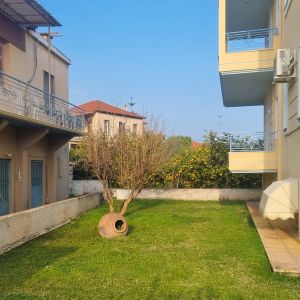

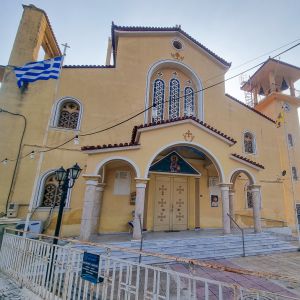
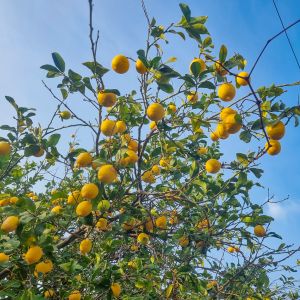

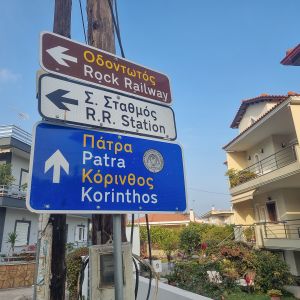
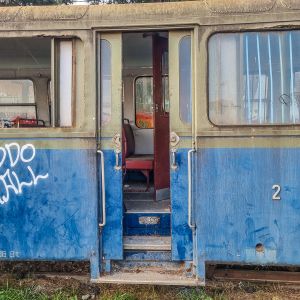

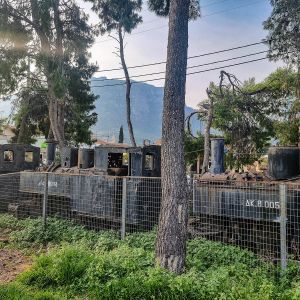

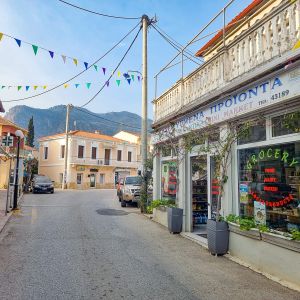


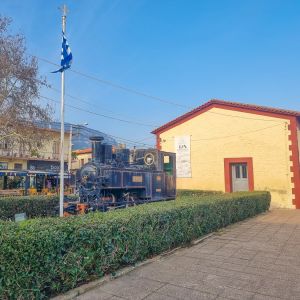
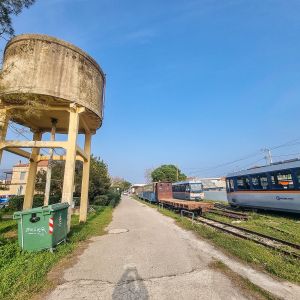
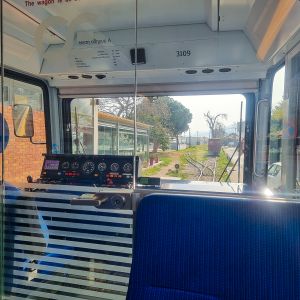
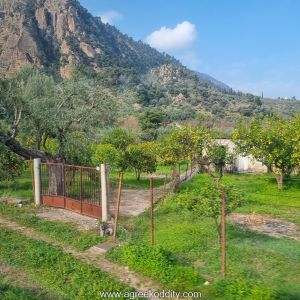

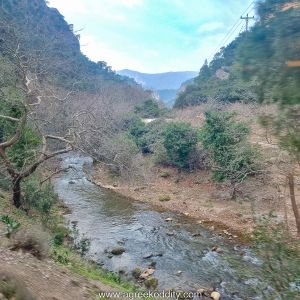
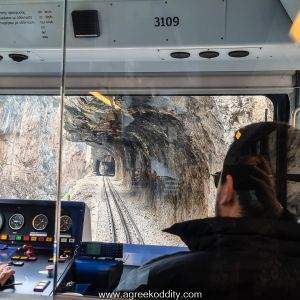
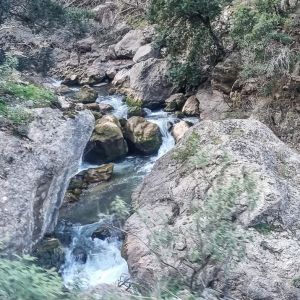


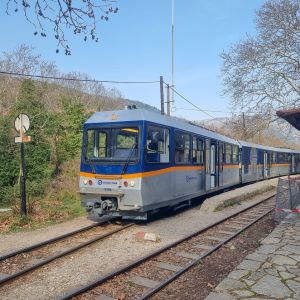
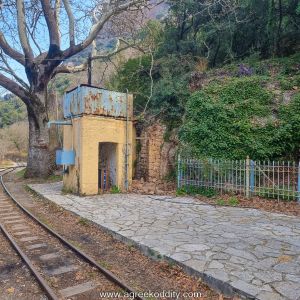
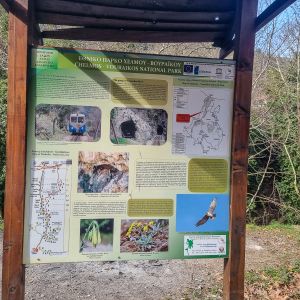
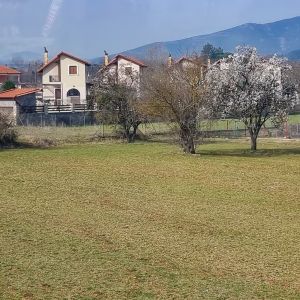

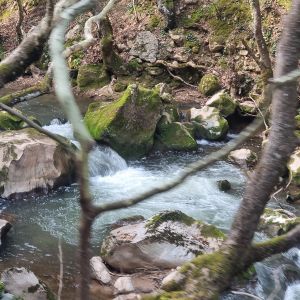
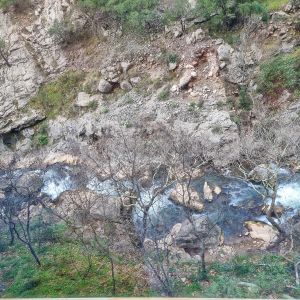
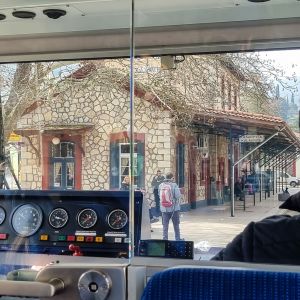

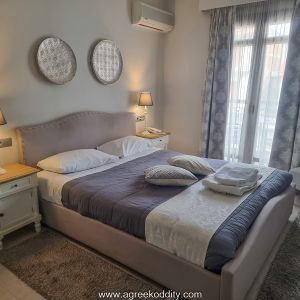
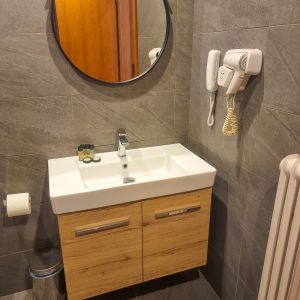

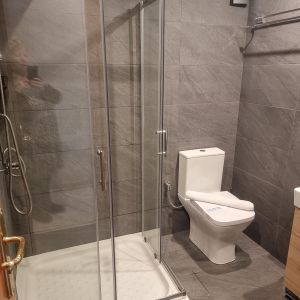
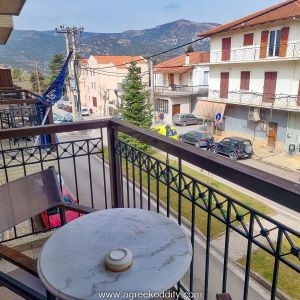
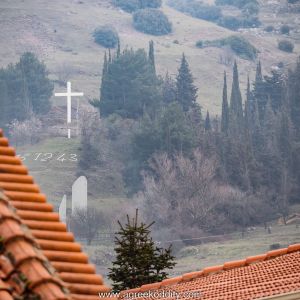






Hi Stephanie,
Can you remember (going from Diakopto to Kalavryta) if it’s best to sit on the left or the right side of the train?
The seats behind the driver are allready reserved, so that’s not an option.
Also: does it only stop at Zachlorou, or are there more stops? I find that there are more stations/stops on the map, but I get the impressions they’re no longer used.
Thanks in advance, love your blog!
Hi Piet. Thank you for your kind words about the blog. I don’t think that it really matters which side of the train. I sat on the right hand side and leaving Diakopto you pass all the orange groves and then you begin to catch site of the small waterfalls. I think that the river runs mainly along the right hand side though I did see it on the other side tool. Over on the left there is a point when you get a good view of a junction of tunnels. There was a couple sitting to the left of me who moved from side to side but the train was fairly empty on this particular day. The windows practically go up to the ceiling so you can get almost good all round views from whichever side you sit. On my trip yes it did only make the one stop which is the entrance to the National Park and great for hikers. I’m sorry I can’t be more help but you’ll absolutely have an amazing trip! ❤